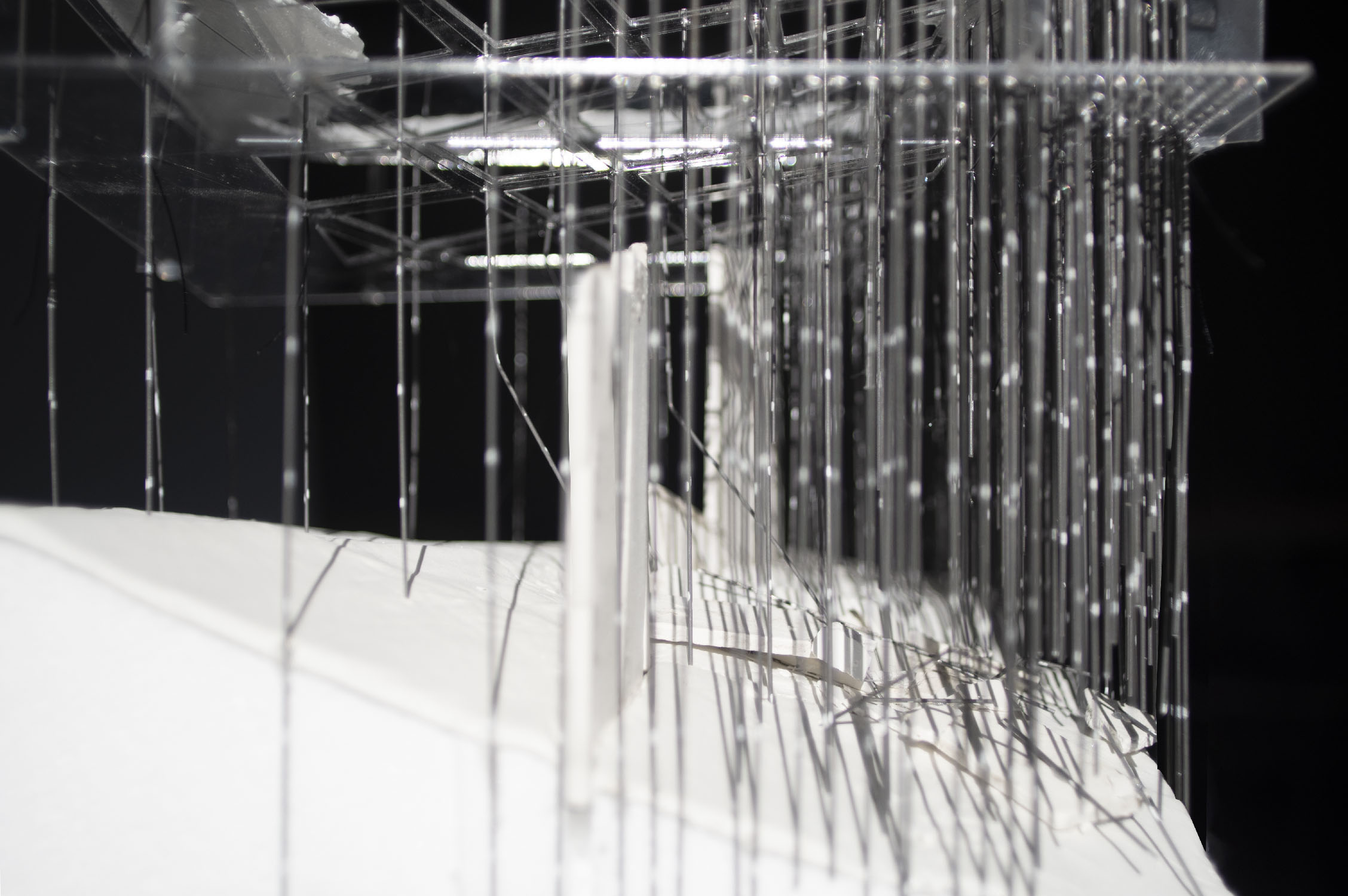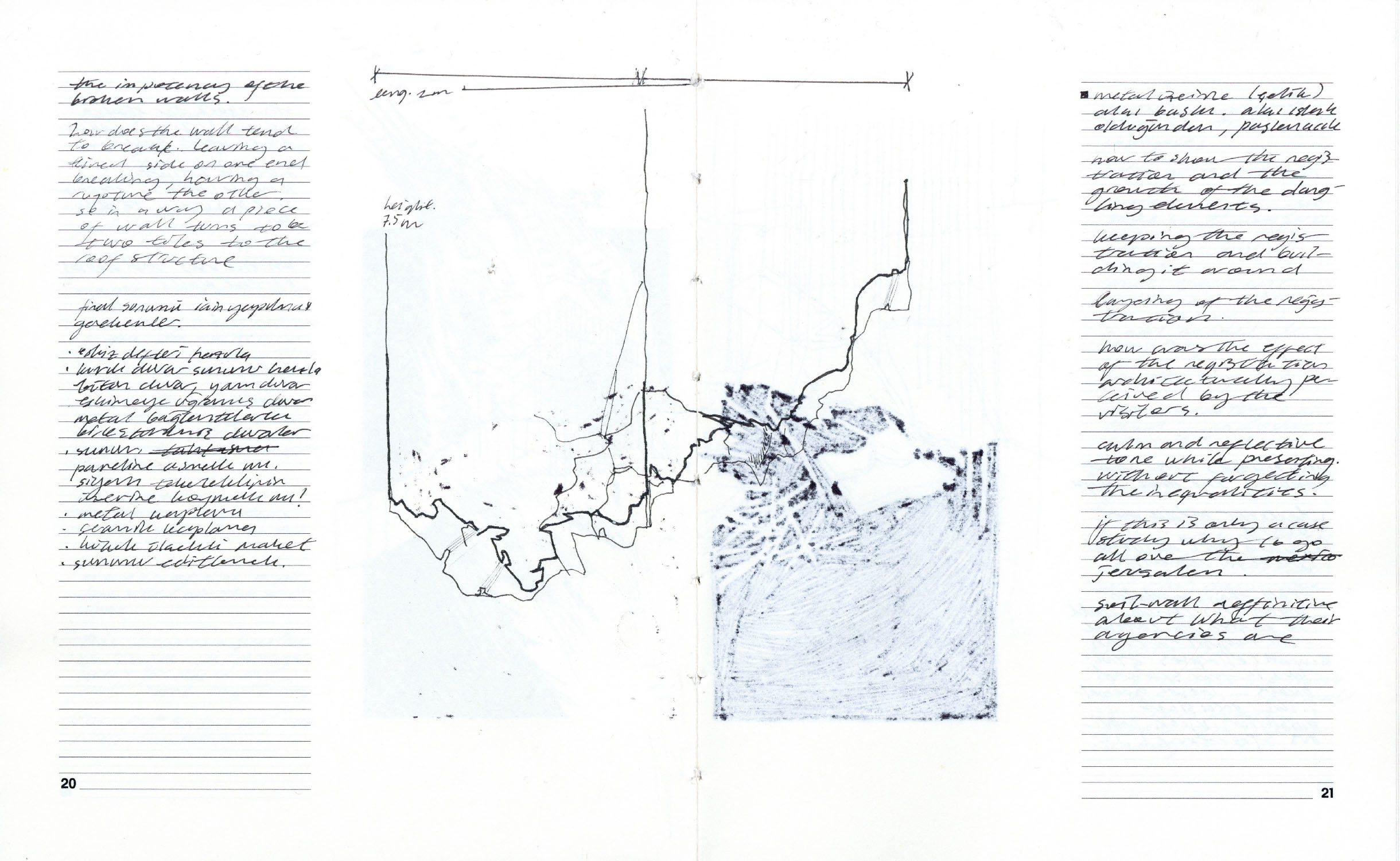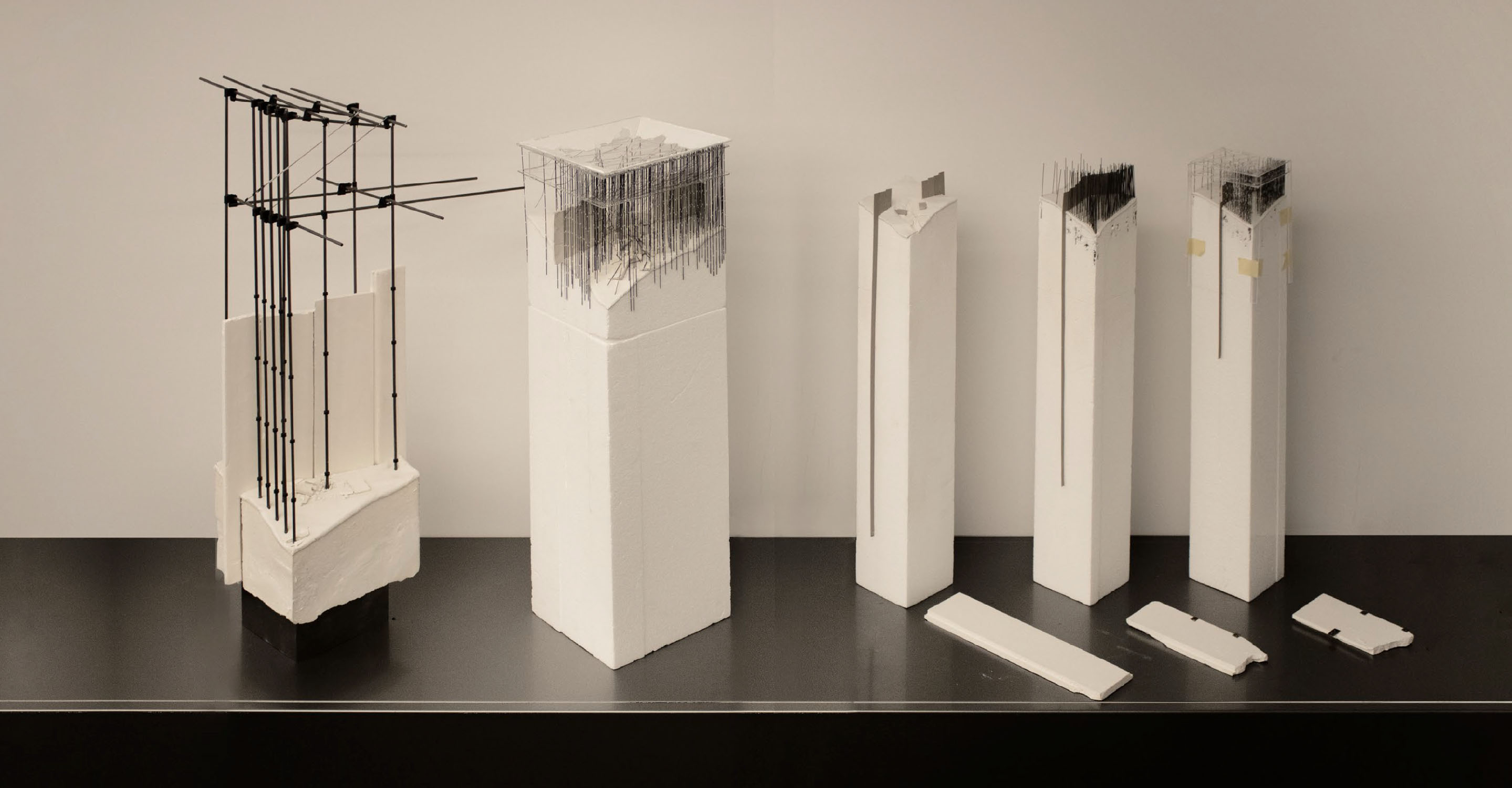




























Along the seven-hundred kilometers of concrete wall built by the State of Israel to enforce its power over the Palestinian-Israeli landscape is an unruly section, no more than thirty meters wide, on the north edge of the Shuafat refugee camp. With each period of heavy rain, the wall collapses as the soil beneath it erodes. And with each collapse the Israeli Defense Force repairs the wall for what it thinks is the final time, until the earth spits the barrier up again. futility as common ground locates possibility in this ritual collapse, introducing a public enclosure for Israelis and Palestinians to mourn, grieve, and resist together when the barricade that keeps them apart itself falls apart. Whereas the section built on the Palestinian refugee camp is always accessible to its residents, the section on the Israeli settlement is inaccessible until the wall’s collapse, thereby inverting the presiding asymmetry of mobility.
The structure’s columns index the various layers of the soil that make the terrain so unstable. Its heavy, sloped roof is constructed from reclaimed wall debris, thereby using the wall itself to hasten its own collapse. After each collapse of the wall, new support columns are added to those broken by the rubble, which are left as a record of previous collapses.
The structure’s columns index the various layers of the soil that make the terrain so unstable. Its heavy, sloped roof is constructed from reclaimed wall debris, thereby using the wall itself to hasten its own collapse. After each collapse of the wall, new support columns are added to those broken by the rubble, which are left as a record of previous collapses.
Harvard GSD
Sergio Lopez-Pineiro
Sergio Lopez-Pineiro
Fall 2021
Academic / Individual
Academic / Individual
futility as common ground